
Things have transitioned and been modified with our annual SB&D ranking of the biggest economic development projects in the South. After about 30 years, SB&D has streamlined what is the only ranking of significant job and investment generating deals in the American South. Yes, it is one-of-a-kind data unavailable from any other source.
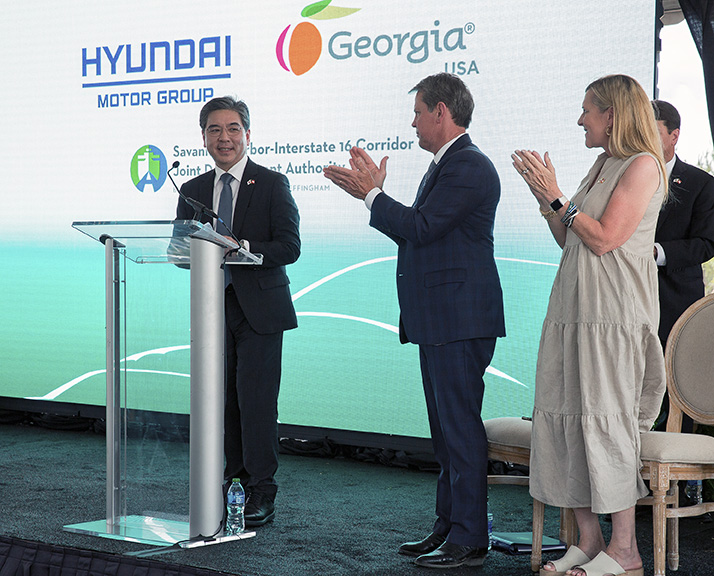 In decades past, we have brought you just about every project announced in the South of 200 jobs and/or $30 million in investment and published the results. It was rewarding, but painstaking for not only us, but you, the reader and the many sources we used to find the information. It was a tough but valuable resource. It had its place for 30 years.
In decades past, we have brought you just about every project announced in the South of 200 jobs and/or $30 million in investment and published the results. It was rewarding, but painstaking for not only us, but you, the reader and the many sources we used to find the information. It was a tough but valuable resource. It had its place for 30 years.
SB&D doesn’t judge an economy as an economist does, such as using real-time data like quarterly GDP, worker productivity and monthly unemployment rates. Unemployment rates are incredibly important in economic development, as is job creation. Yet, we believe there are more important drivers to an economy; like comparing major projects from one year to another. Obviously, if it is an active year of business and industry making momentous investments and generating gobs of jobs, the economy is either in fine shape or those corporate experts expect it to be within two or three years.
Today we have over 11 million job openings with only 5 million people in the U.S. who are capable (really, many people are not able to work; think family caretakers, families who cannot afford child care, the disabled and addicted and those with mental illness, etc.) and what you have is an empty labor wagon. The other culprits leading to a lack of labor — our nation is getting so much older and the U.S. population is decreasing and fast, therefore we cannot replace those aging out of the workforce.
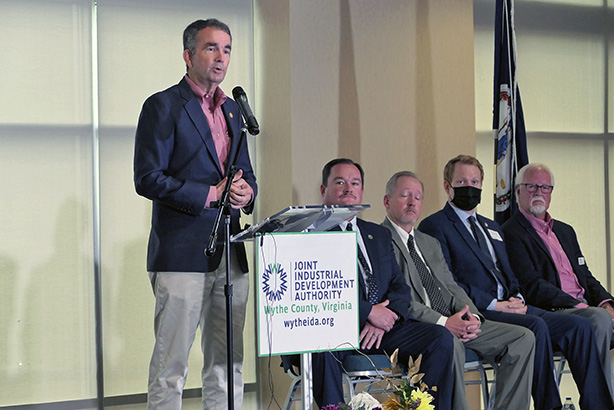 We told you so eight years ago; that demographics — a huge drop in child-bearing rates for families that can have children, and the fact that more people die (much less retire) in this country than those joining the workforce — will have a greater effect on economic development in the nation and the South than at any time since the Great Depression.
We told you so eight years ago; that demographics — a huge drop in child-bearing rates for families that can have children, and the fact that more people die (much less retire) in this country than those joining the workforce — will have a greater effect on economic development in the nation and the South than at any time since the Great Depression.
Here is a depressing example: about 10,000 people retire each day in the U.S. However, only about 1,000 people join the workforce per day. What? Yep! Three-point-five million in the nation’s workforce retire each year in the U.S. but only about 350,000 a year (in 2021) turn age 16, or turn working age, according to the Census. Those are not numbers that can support a growing economy, not even close.
If anything, those figures are the most important numbers ever in this nation’s economic history. At least until automation takes over the vast majority of work in this country, it will be difficult if not impossible to grow its economy with so few workers available, and fewer still each year. That fact, that demographic, is not going to change for decades.
As mentioned, as opposed to real-time data, we look at the economy in other ways, too — economic development project activity broken down by how many manufacturing and service projects were announced in the region each calendar year. Lately however, demographics that affect economic development are a huge driver in changing SB&D’s public data dump. You just can’t ignore it in that it is so profound to all.
Yes, the data has shown us that things have changed, big-time. We saw it eight years ago and wrote about it ad nauseum.
This year’s SB&D 100, a different review
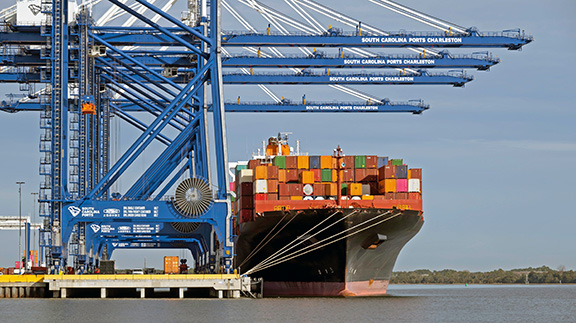 Another year of SB&D monitoring economic development project activity in the South — the world’s third largest economy — clearly shows that project activity has changed dramatically since the economy grew some real legs in 2012, four years after the depths of the Great Recession. By 2015 and 2016, record number of large projects were being totaled.
Another year of SB&D monitoring economic development project activity in the South — the world’s third largest economy — clearly shows that project activity has changed dramatically since the economy grew some real legs in 2012, four years after the depths of the Great Recession. By 2015 and 2016, record number of large projects were being totaled.
Since then, it has been on a long road downward, but nothing to be alarmed about. . .until now. Or is it time to be alarmed? Hard to tell. Massive projects that will transform whole state regions have occurred in the last three years (think the electric vehicle industry and semiconductors in Texas on a smaller scale), but activity from small companies and their smaller projects have caved.
What changed the economy?
We have already written about the void in labor availability. That’s been an issue for more than a decade, but it hasn’t been brought to the attention of the mainstream folks — or even some so-called experts — until recently.
Some very smart people still are not familiar with our worker shortages or the reasons behind the shortages. I was tooling around town one Saturday morning this summer, listening to NPR’s “Morning Edition,” when some Ted Talk dude was interviewed. His Ted Talk subject was about the fact that young couples are reluctant to have children because they do not believe they can afford a child.
He went on to “reveal” that the challenges in the labor department facing this country “could” have a dramatic effect on the economy as a whole, including funding of social services most of us have paid for, including Social Security and Medicare.
Really? And the Ted Talk editors approved him as a presenter? That means the Ted Talk program’s upper management does not know much about the issue because it has been around for a long time in this country, most notably in the Northeast and Midwest, two regions that are losing population to the West and the South each year in herds.
So, again, we have the labor situation, which is dire. Then the pandemic arrived and to the fault of no one, the nation’s economy hit rock bottom the first half of 2020 and improved slightly in the second half.
Since, it has been revived, but few are sure of where the economy is going, up or down. We are not in a recession, as some claim. We may be soon enough. But the lack of knowledge of where we are going is disturbing.
So, let’s get into it with Part 1 of the 30th annual SB&D 100
As reported earlier, major international players in automotive such as the Koreans (Hyundai, Kia), the Germans (BMW, Mercedes, Volkswagen), the Japanese (Nissan, Toyota, Honda, Mazda) and domestic automakers like Ford and GM, are transforming the region’s economy with multi-billion-dollar electric vehicle deals that will change even the most remote areas of the South. Few of the secondary projects that will supply these new massive, multi-billion-dollar investments have been announced as of yet.
Upstarts like Rivian, Canoo, VinFast and Proterra are also making major investments, but it remains to be seen how successful they will be. Rivian announced in September it is looking at a joint venture with Mercedes to build EVs in Europe. Yet, many of the upstart EV manufacturers — like Rivian —
have large-scale investors, such as Amazon, that will keep them running until the power is turned off.
So, what kind of year was 2021 in project activity of 200 or more jobs and/or $30 million in investment in the South based on gross product? As reported, the big players — automotive or not — made huge investments never before seen in the South’s history. Included here and in this section’s dossier is also this year’s (2022 to date) job-generating projects.
As for smaller manufacturers and the service industries, 2021 and so far in 2022 was a bust. Again, lack of labor was one of the major culprits. A lack of customers for a year or more, was the main driver to closures.
The last two years are the first in SB&D 100 history — not counting the Great Recession — where both manufacturing and services failed to announce significant job projects. Chart No. 1 shows how project activity in the South has slowed beyond the enormous deals from the EV automotive industry, which singlehandedly will transform deals in the most unlikely places in the region next year and beyond. Rural areas of the region will should be in high cotton soon enough. Almost all of the locations of these immense next-generation projects are in rural areas of the region.
Every industry imaginable failed in creating and announcing big deals the last two years in the South. Again, it’s okay and nothing to be alarmed about. Labor is nonexistent because of lots of factors, such as the South is at full employment and has been for years.
Consumer demand a bright spot
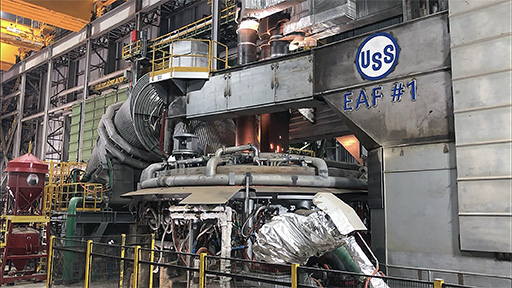 While consumer demand has been strong during those two years, it slowed earlier this year and ruptured in 2020 and the first part of 2021. Consumer demand from the services industry — retail, financials, lodging, the retail food-service industries and other entertainment options — has been solid of late, but those sectors have a long way to go to match totals seen from years past, or pre-pandemic.
While consumer demand has been strong during those two years, it slowed earlier this year and ruptured in 2020 and the first part of 2021. Consumer demand from the services industry — retail, financials, lodging, the retail food-service industries and other entertainment options — has been solid of late, but those sectors have a long way to go to match totals seen from years past, or pre-pandemic.
The 2022 SB&D 100 totals only 364 large projects in calendar year 2021 and 285 deals so far in 2022, ending October 1 (see chart on the opposite page). The 364 projects announced in the South in calendar year 2021 are the worst ever, even at the height of the Great Recession.
When the SB&D 100 was first tabulated in 1994, the South saw more game-changing services and manufacturing business pledges. The 285 announcements from January 1, 2022, to October 1, 2022, mean it will be a massive undertaking by economic developers in the South to capture as many as 320 deals for the year.
Again, no one is at fault here. There is no one left to hire in the barren labor shed except people who already have a job. The economy is fickle at best and the experts are at odds on where we go from here. It just means that in a rare turn of events — COVID, people retiring and dying at rates that dwarf those being born in this country, among other factors — the nation’s economy has faced unprecedented challenges.
Poor economic development project activity in the South does not represent a failing economy. It is a rare event (because it has never happened before) when corporate America and its large international players pull back on job generation when the economy is somewhat stable.
As for investment totals however, that is another thing. In 2021 and 2022, big corporations here and from all over the world set records never before seen in new and expanded announcements. These projects have announced tens of thousands of jobs, but so far it’s too early to see an impact on employment numbers. There were deals announced in those years — single projects — of $10 billion (that’s with a “B”) and so many others over $5 billion.
A few years back, we got a wonderful belly laugh from George Swift, the boss over at the Southwest Louisiana Economic Development Alliance in Lake Charles. Lake Charles is the epicenter in the U.S. for LNG (liquefied natural gas) mined in the South and exported worldwide to international destinations like those in Europe and Asia. The multiple LNG projects he captured over the years was so capital-intensive and so numerous that he told me one day, “Michael, unless it is a $2 billion or more deal, we don’t even write a press release about it.” However, we have never seen the value of investments like those from the electric vehicle industry. . .never!
 The industry sectors’ performance in the South over the last 30 years and in 2021 and 2022
The industry sectors’ performance in the South over the last 30 years and in 2021 and 2022
As you can see, large projects by industry have changed. Not dramatically, but certainly of note are some that responded to the virus such as health care (temporary virus-related projects announced during the pandemic are not counted).
Automotive is still on top of the big-deal list in the South in 2022 and 2021 as it almost always is in the Southern Automotive Corridor. Food and beverage, aviation/aerospace, pharmaceuticals, metals and headquarters held their own or grew with new and expanded deals last year.
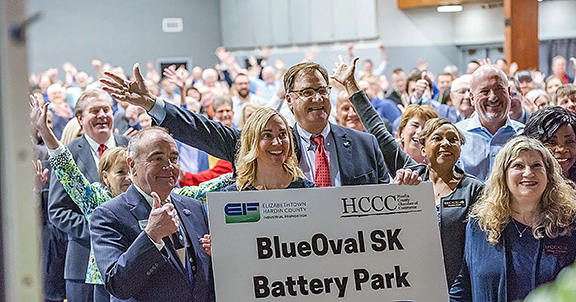
Michigan-based Ford Motor Company is making its largest investments in history in the South, including this one in Hardin County, Ky., (near Elizabethtown). The Hardin County electric vehicle battery complex will create 5,000 jobs with over $5 billion in investments. Ford also chose Stanton, Tenn., (near Memphis) for a similar operation that will manufacture batteries and an electric pickup, the F-150. Pictured is Rick Games (the tall guy in the middle), the leader of economic development in Hardin County.
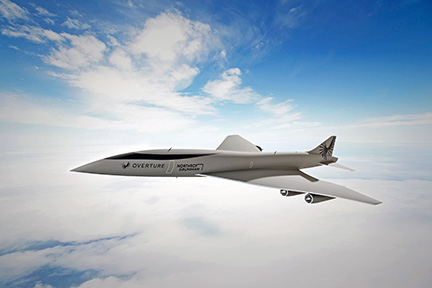 Those that crumbled in 2021 were the usual suspects in a pandemic and a changing economy. Distribution, oil and gas, petrochemicals, financials services (Oh, Florida, find more than financials and tourism to support your economy), and electronic deals of major significance were shattered the last two years.
Those that crumbled in 2021 were the usual suspects in a pandemic and a changing economy. Distribution, oil and gas, petrochemicals, financials services (Oh, Florida, find more than financials and tourism to support your economy), and electronic deals of major significance were shattered the last two years.
As for call centers, that pesky, low-paying, yet major job-generating industry, the only one in SB&D 100 history that unseated automotive twice in 30 years in total large employment announcements (well, distribution did it once a few years back), that business is nonexistent in the South.
Call centers registered absolutely nothing the last two years of economic development projects announced in the South of 200 jobs or more. Either that, or call centers, which have been renamed “customer care centers” and “solutions support centers,” have come up with a new moniker that we do not recognize. It took a few years to notice a customer care center is just a stinking call center.
We assume inbound call centers had few “problems” with the products they represented during COVID. Or, the outbound folks just walked out over all of the angry responses and low pay. More likely, though, no one wants those jobs in an era of full employment. Either way, good riddance.
Conclusion
 There isn’t much to conclude here other than to write that the results are skewed in a period the U.S. economy has never experienced. In my lifetime, I have at no time witnessed an economy shut down, as it did during the height of the pandemic. Not even in the Great Recession or the many recession prior such as 2001 have we seen a total cave economically. You can believe that was then and this is now. Well, it was just in the winter quarter of this year that 900,000 people were contracting the virus per month.
There isn’t much to conclude here other than to write that the results are skewed in a period the U.S. economy has never experienced. In my lifetime, I have at no time witnessed an economy shut down, as it did during the height of the pandemic. Not even in the Great Recession or the many recession prior such as 2001 have we seen a total cave economically. You can believe that was then and this is now. Well, it was just in the winter quarter of this year that 900,000 people were contracting the virus per month.
On a personal note, our printer in Lynchburg, Va., Progressive Printing, shut down its press and business at large as a result of COVID this past winter and spring. We could not print, though; our online properties were not affected. So, in part, we were kind of “out of business,” too.
The numbers you read in this version of the SB&D 100 compared to other years of economic development activity in the South, the world’s third largest economy, are, for the most part, unreliable. What comes next is anyone’s guess.